Safeguarding the Digital Frontier: My Approach to Cybersecurity
And so, the tale of the Internet Old West continues. A realm where hackers plot in the shadows, incident responders patrol the digital frontier, and internet users, rely on the bravery of those who defended the virtual towns from the relentless forces of the outlaw hackers. These are their stories.
As The Encryption Kid, guided the captured member of Black Byte's Malwarez crew to the nearby Quarantine jail, a shadow fell over the bustling town of Cysecburg. Unbeknownst to him, Black Byte had been watching and waiting for the opportune moment to strike.
The Encryption Kid, known for his skills in safeguarding data and securing the virtual frontiers, was focused on delivering the outlaw to justice. This diversion left Sheriff Firewalle as the lone guardian of Cysecburg, a responsibility he took seriously. Little did he know that the town's databank, brimming with an unprecedented surge of personal data, had become a target.
In the dimly lit corners of Cysecburg, Black Byte a cunning and notorious outlaw, seized the moment. Alongside his partner in crime, Maluitius Ecksploit, they exploited a newly discovered vulnerability in the databank's code. Like digital phantoms, Black Byte and Maluitius Ecksploit infiltrated the databank's code with calculated precision. Exploiting the newfound vulnerability, they maneuvered through the virtual defenses with ease.
The town's defenses were momentarily weakened and the databank and struggling to handle the influx of information. This combination of circumstances proved to be an irresistible lure for the nefarious duo. Black Byte, and Maluitius Ecksploit infiltrated the databank, their digital footsteps silent and deadly. The outlaws moved swiftly, taking advantage of the chaos caused by the diversion orchestrated by The Encryption Kid and the captured crew member. As the duo delved deeper into the databank's code, they manipulated vulnerabilities to gain unauthorized access. The databank, now overstuffed with personal data, was indeed a treasure trove for the outlaws. It was a digital heist of unprecedented scale, and the very heart of Cysecburg's cybersecurity was under siege.
As the outlaws delved deeper into the databank, Sheriff Firewalle received an urgent alert. He was out patrolling the perimeter when the town's cybersecurity system, sensing the breach, sounded the alarm. Realizing the severity of the situation, the sheriff hurriedly rode back to Cysecburg, his virtual spurs echoing through the empty digital streets. The town, now eerily quiet, awaited the confrontation between law and lawlessness. As he reached the databank's virtual gates, the sheriff encountered Black Byte and Maluitius Ecksploit in the midst of their cyber heist. A virtual duel ensued, with lines of code clashing like the echoes of gunfire in the Internet Old West. The sheriff, armed with his knowledge of cybersecurity, fought valiantly against the outlaws who sought to plunder the town's digital treasures. Sheriff Firewalle, though outnumbered, stood firm. He knew that the town's future depended on his ability to thwart the outlaws and protect the invaluable personal data stored within the databank.
Back at the jail in Quarantine, The Encryption Kid was wrapping up his duties. The Encryption Kid, perceptive as ever, sensed a disturbance in the digital currents. As he approached the town, The Encryption Kid saw the telltale signs of a cyber intrusion. The databank, once a beacon of security, now flickered with the echoes of the outlaws' exploits. Realizing the severity of the situation, The Encryption Kid searched for Sheriff Firewalle. The Sherriff was already engaged in battle with the senior members of the Malwarez gang. When Black Byte saw The Encryption Kid join the Sherriff in the fight he shot up a flare. The flare was noticed by nearby members of the Malwarez gang, who hastily rode back to Cysecburg.
Together, Sheriff Firewalle and The Encryption Kid confronted Black Byte and Maluitius Ecksploit, engaging in a virtual showdown that would determine the fate of Cysecburg's precious data. The town's future hung in the balance as lawmen and outlaws clashed in the vast and ever-shifting landscape of the Internet Old West.
Continued on the next page
In an era dominated by digital connectivity, cybersecurity has become a paramount
concern for individuals and organizations alike. When I was growing up I was never to talk to strangers and never accept rides from them either. I always had money for the payphone in case of emergencies. I remembered all the phone numbers I needed without a contact list. Today, I have friends I've never seen in person. If I were to pass them on the street, they would not be a familiar face. If I need a ride I whip out my cell phone and have a stranger come pick me up and drive me around. I can't even remember the location of the last payphone I've seen. The world has changed dramtically from the one I grew up in. The advancements and benefits we've gain from the rise of technology is truly amazing but everything has two sides. Everyone talks about the good things technology has brought us but we gloss over the fact that people use these advancements for causes that are not so noble. The internet is teh new Old West. Back then if you could take something and get away with it, it was yours. Consequences of the law was almost nonexistent. Much like the Old West was, the internet as it is today; is still pretty wild and lawless (although that is changing quickly). Instead of extorting townspeople and robbing stage coaches, the bandits of today take a cyber approach to their heists. Today they remotely hack bank accounts and hold data for ransom.
In the Old West, everyone had a six shooter. Today everyone has cybersecurity practices.
This writing explores the critical importance of cybersecurity, outlining the steps that both individuals and companies should take to enhance their security posture. Additionally, we dip our toes into the sophisticated tactics employed by attackers, examining notable hacks and proposing robust security protocols that could have mitigated or prevented these incidents.
The increasing reliance on digital platforms has exposed individuals and businesses to unprecedented cybersecurity threats. This writing underscores the urgency of addressing these challenges and outlines the significance of a proactive cybersecurity strategy. The digitization of our world has undergone a transformative journey over the past two decades, shaping an interconnected environment that is both dynamic and pervasive. Unlike the landscape of 20 years ago, today's digital
technologies have woven themselves into the fabric of our daily lives, revolutionizing how we communicate, conduct business, and access information.
Twenty years ago when the internet was in its nascent stages, with limited connectivity and a fraction of the services we
now take for granted; cyber security was an after thought. We didn't use it that much, we didn't trust it that much. Today, however, digital technologies permeate nearly every aspect of our existence. From smartphones that are extensions of our identity to smart homes that respond to our commands, the pervasive nature of these technologies is unprecedented.
The evolution of the internet from a static web of information to a dynamic ecosystem of interconnected devices has
exponentially increased the scope of potential cyber threats. The internet works by accessing data. To make everything work better data access had to be easier. Computer systems love easy data access, and so do cyberattackers. In the past, isolated computer systems posed fewer entry
points for malicious actors. Now, with the proliferation of IoT devices and cloud-based services, the attack surface has
expanded exponentially, providing adversaries with a broader range of targets. 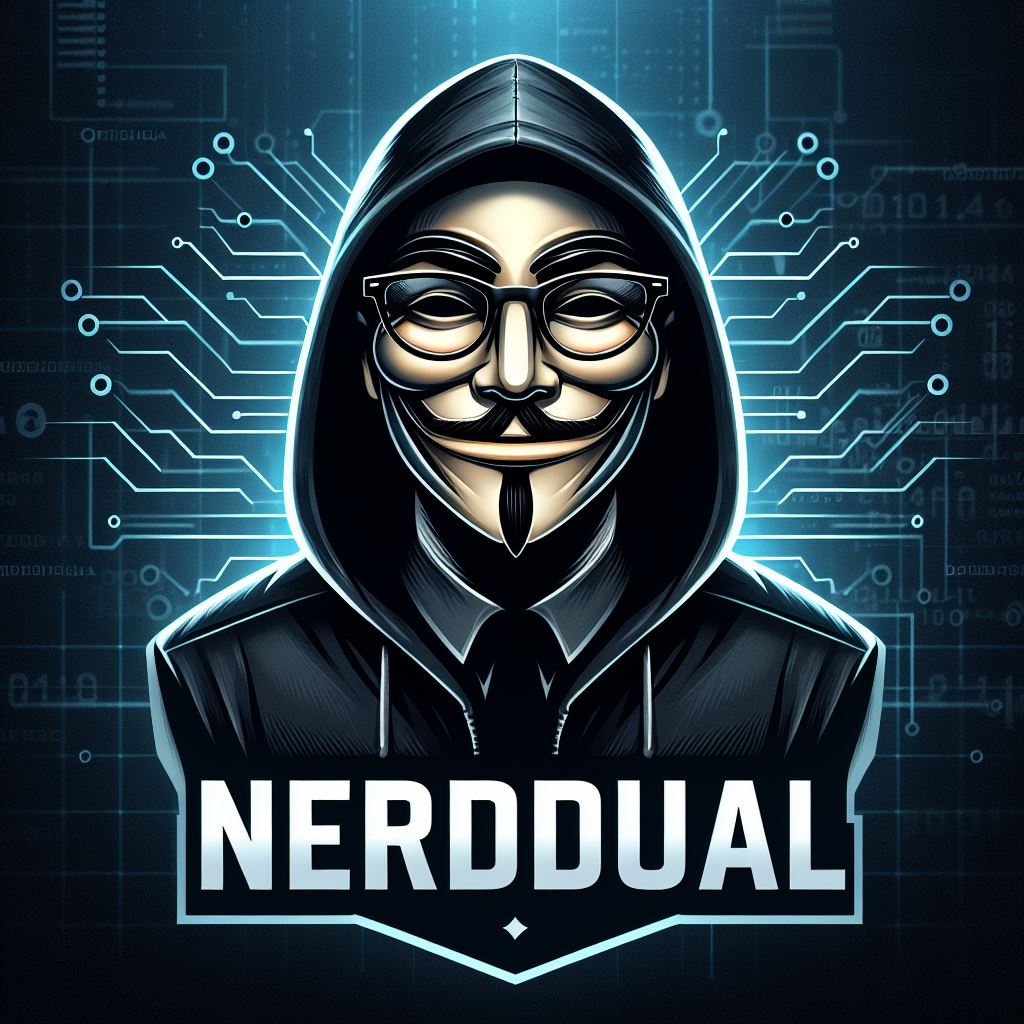
The Rise of E-Commerce and Online Transactions:
Twenty years ago, online transactions were relatively uncommon, and financial activities predominantly occurred in
brick-and-mortar establishments. Today, the digital economy thrives, with e-commerce, online banking, and cryptocurrency
transactions becoming integral parts of our financial landscape. This shift has not only streamlined convenience but has
also attracted cybercriminals seeking to exploit vulnerabilities in these digital transactions.
Social Media and Personal Information:
The advent of social media platforms has revolutionized how we connect, share, and communicate. However, it has also
introduced new avenues for cyber threats. Personal information once guarded in private conversations is now shared
across digital platforms, creating a treasure trove for identity thieves and threat actors seeking to manipulate
individuals through targeted attacks.Social media platforms have become integral to modern communication, connecting billions of users globally. However, the
widespread use of social media has introduced new avenues for cyber threats. Here are some of the key challenges and
threats associated with social media platforms:
The What
Description
The Method
Phishing Attacks:
Cybercriminals use social media to create fake profiles or impersonate legitimate accounts to trick
users into revealing sensitive information.
Phishers may send deceptive messages, friend requests, or links that appear trustworthy but lead to
malicious websites designed to capture login credentials or install malware.
Social Engineering Exploitation:
Social engineers leverage information available on social media profiles to manipulate individuals
into divulging confidential information or performing actions that compromise security.
Attackers gather personal details, relationships, and interests from social media to craft convincing
messages or impersonate trusted contacts.
Account Hijacking:
Cybercriminals attempt to take control of user accounts to spread malware, steal personal
information, or engage in fraudulent activities.
Weak passwords, password reuse, and successful phishing attacks can grant unauthorized access to social
media accounts.
Malicious Content Distribution:
Malicious actors use social media platforms to distribute malware, phishing links, or fake
applications, exploiting users' trust in content shared within their network.
Cybercriminals may use compromised accounts to post malicious links, distribute infected files, or share
content designed to deceive users.
Identity Theft:
Social media provides a wealth of personal information that can be exploited for identity theft,
enabling attackers to impersonate individuals for various malicious purposes.
Stolen personal details from social media profiles can be used to create fake identities, commit fraud, or
conduct targeted attacks.
Location-Based Threats:
Location tagging and check-ins on social media can expose users to physical security risks,
especially if the information is visible to a wide audience.
Cybercriminals may use location data to track users, plan physical attacks, or exploit information about
users' absence from home.
Credential Stuffing:
Attackers use usernames and passwords leaked from one breach to attempt unauthorized access to social
media accounts, exploiting the common practice of password reuse.
Cybercriminals automate the login process using stolen credentials on various platforms, gaining access to
accounts where users have reused passwords.
Deepfake Threats:
Deepfake technology can be leveraged to create realistic but fabricated content, including videos and
audio recordings, which can be used to spread misinformation or manipulate public opinion.
Deepfake content can be shared on social media to deceive users, damage reputations, or amplify false
narratives.
Business Email Compromise (BEC):
Cybercriminals may use information gathered from social media to conduct BEC attacks, where they
impersonate executives or employees to trick others into transferring funds or revealing sensitive
information.
BEC attackers craft convincing messages based on publicly available information to deceive targets within
an organization.
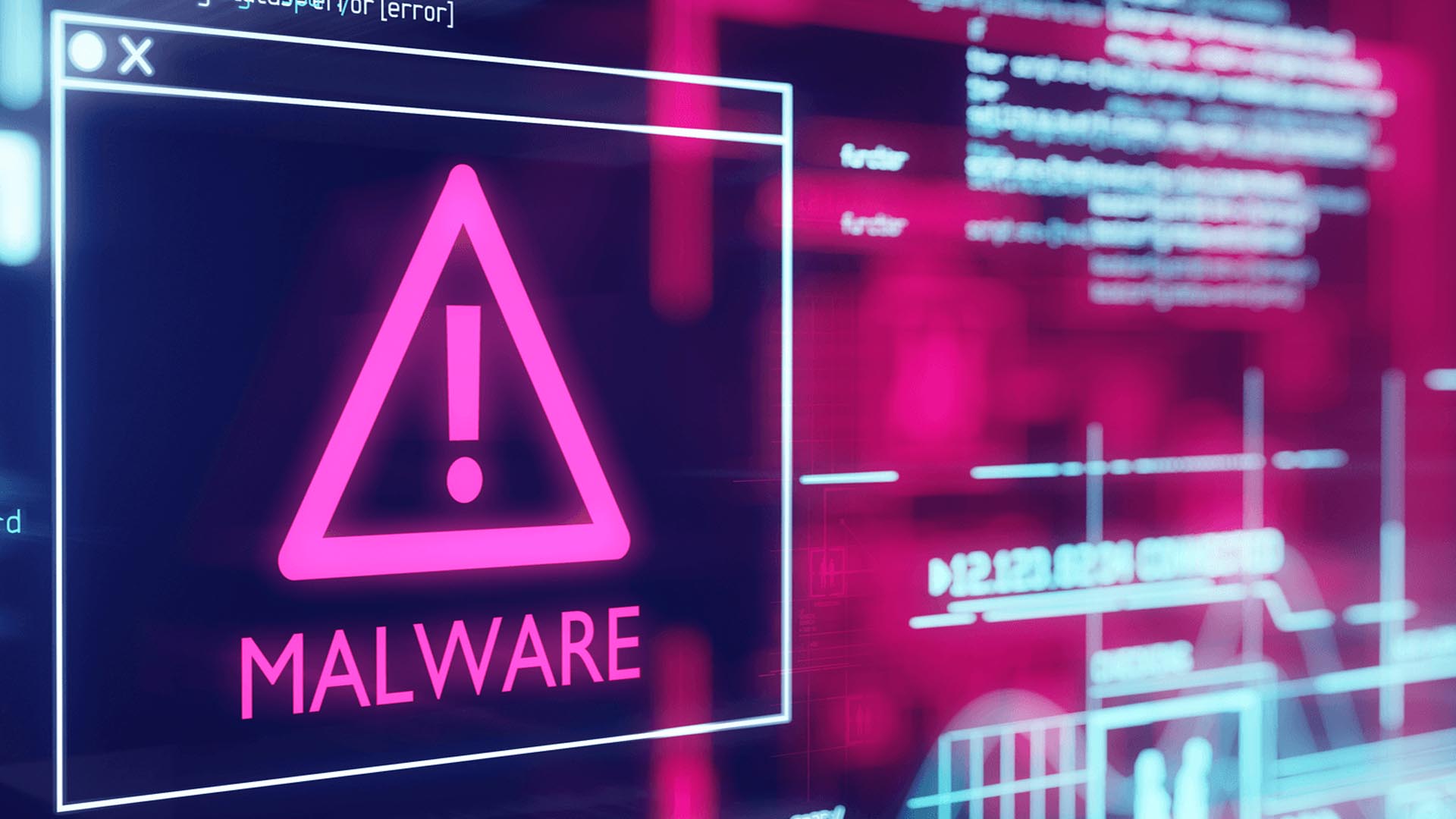
Mitigating these threats requires a combination of user awareness, secure privacy settings, strong authentication
practices, and platform-specific security features. Users should exercise caution when sharing personal information and
be mindful of potential risks associated with their online presence. Social media platforms, in turn, must continually
enhance security measures to protect users from evolving cyber threats.
Cloud Computing and Remote Connectivity:
The shift towards cloud computing and remote work, accelerated in recent years, has further blurred the traditional
boundaries of secure environments. Unlike two decades ago, when data was largely stored on localized servers, today's
reliance on cloud services has made data accessible from virtually anywhere. This accessibility enhances productivity
but also poses challenges in safeguarding sensitive information from cyber threats.
Cloud computing and remote work have significantly changed the traditional approach to cybersecurity in several ways:
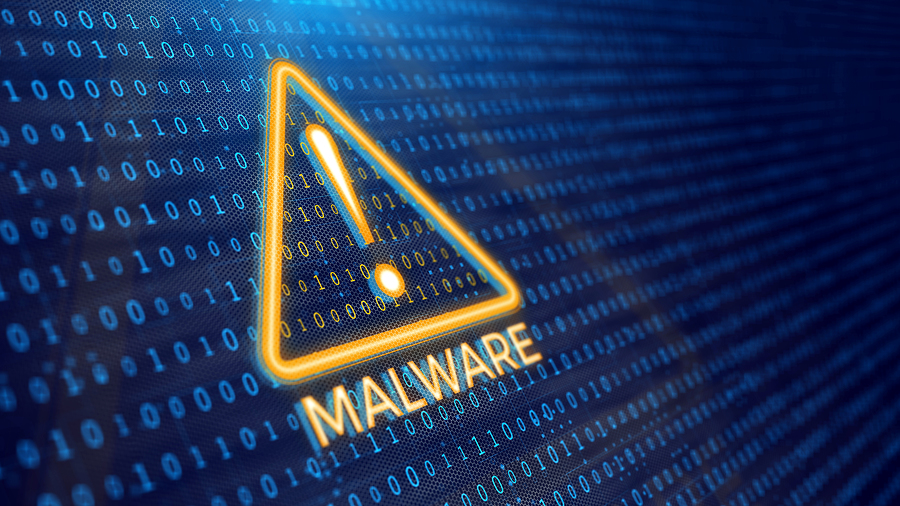
The What The Why
Increased Cyberattacks: With the shift to remote work, there has been a reported 90% increase in cyberattacks.
This has led to an increased focus on remote cybersecurity. Reliance on VPNs: Virtual Private Networks (VPNs) have been widely used to ensure secure connections for remote
workers. However, VPNs can have issues, such as outdated patching and updates, which can create vulnerabilities¹. Cloud Computing Security Issues: While cloud computing has made remote work easier, it also presents new security
challenges. For instance, data stored in the cloud may not be fully controlled by the user, leading to potential
security breaches. Shared Responsibility Model: In the cloud-first world, security is a shared responsibility between customers and
cloud providers. This is a shift from traditional on-premise security where customers had full control of their
environments and security. Increased Complexity: The use of cloud environments often involves a more complex architecture, such as
microservices. This increased fragmentation can lead to access control issues and increases the probability of errors.
These changes highlight the need for evolving cybersecurity strategies to address the unique challenges posed by cloud
computing and remote work.
The Cybersecurity Landscape:
A comprehensive overview of the current cybersecurity landscape, highlighting the evolving nature of threats and the
need for continuous adaptation to emerging risks.
Highlighting the evolving nature of threats and the need for continuous adaptation to emerging risks in a cybersecurity
awareness campaign can be achieved through the following strategies:
1. Educate on Evolving Threats: Regularly update your team about the latest cybersecurity trends, such as the
increasing sophistication of cyberattacks and the use of artificial intelligence and machine learning by adversaries.
 2. Promote Proactive Measures: Encourage a proactive, forward-looking stance to address and mitigate future
disruptions¹. This includes anticipating emerging cyber threats and understanding new defensive capabilities.
2. Promote Proactive Measures: Encourage a proactive, forward-looking stance to address and mitigate future
disruptions¹. This includes anticipating emerging cyber threats and understanding new defensive capabilities.
3. Share Knowledge and Experiences: Foster a culture of knowledge sharing to identify emerging trends, understand
new attack vectors, and collectively develop effective defense strategies.
4. Develop a Cybersecurity Plan: Create a plan detailing how information about ongoing threats is analyzed and used
internally. Regularly evaluate new tools and processes to address security gaps in response to threat trends and
observed tactics.
5. Prepare for Attacks: Develop a playbook to cater to different potential threats⁵. This includes gaining
visibility into their environment, educating users, managing vulnerabilities, and planning and practicing your plan with
your team.
6. Maintain Situational Awareness: Have governance processes in place and maintain a high degree of situational
awareness in every part of the world where you're active.
Remember, cybersecurity is not a marathon, it's a never-ending race; but with the right strategies and continuous adaptation, we can stay
ahead of the threats.
Steps Individuals Can Take to Improve Security:
This section provides practical guidance for individuals, emphasizing the importance of personal cybersecurity hygiene.
Topics include password management, two-factor authentication, and awareness of phishing attacks.
In the digital age, individuals play a crucial role in maintaining a secure online environment. Personal cybersecurity
hygiene is the foundation for protecting sensitive information and thwarting potential threats. The following practical
guidance is essential for individuals to bolster their cybersecurity defenses:

Password Management:
Use Strong and Unique Passwords: Create complex passwords that combine uppercase and lowercase letters, numbers,
and special characters. Avoid easily guessable information, such as birthdays or names.
Password Diversity: Avoid using the same password across multiple accounts. If one account is compromised, having
unique passwords ensures that other accounts remain secure.
Password Managers: Consider using a reputable password manager to generate, store, and autofill complex passwords.
Password managers enhance security by reducing the reliance on memory and promoting the use of unique credentials for
each account.
Two-Factor Authentication (2FA):
Enable 2FA Whenever Possible: Whenever a service offers two-factor authentication, enable it. This adds an
additional layer of security by requiring a second form of verification, usually through a mobile device or email.
Biometric Authentication:
Utilize biometric authentication methods, such as fingerprint or facial recognition,
where available, to add an extra layer of personalization and security.
Awareness of Phishing Attacks:
Be Skeptical of Unsolicited Communications: Exercise caution when receiving unexpected emails, messages, or calls,
especially those urging urgent action. Verify the legitimacy of the communication before clicking on links or providing
personal information.
Check Email Addresses and URLs: Scrutinize email addresses and URLs for inconsistencies or misspellings.
Legitimate organizations will use official channels and accurate web addresses.
Educate Yourself: Stay informed about common phishing techniques and tactics. Be wary of emails requesting
sensitive information or posing as official communications from banks, government agencies, or reputable companies.
(1) What Is Social Engineering in Cyber Security? - Cisco.
(2) What is Social Engineering? | IBM.
(3) Malware, Phishing, and Ransomware | Cybersecurity and ... - CISA.
(4) What Is a Malware Attack? Definition & Best Practices | Rapid7.
(5) Malware attacks: What you need to know | Norton.
(6) Top Routinely Exploited Vulnerabilities | CISA.
(7) 2022 Top Routinely Exploited Vulnerabilities | CISA.
(8) Exploit in Computer Security | Fortinet.
(9) What Is Social Engineering? Examples + Prevention - CrowdStrike..
(10) Avoiding Social Engineering and Phishing Attacks | CISA.
(11) The Human Factor In Cybersecurity: Understanding Social Engineering.
(12) Malware | Cyber.gov.au.
(13) What is Malware? How to Prevent Malware Attacks? - Fortinet.
(14) Inside the Mind of a Cyber Attacker - SentinelOne.
(15) 11 Common Cyber-attack Methods - Logically Secure Ltd.
(16) Security and Risk Assessment of IT Defense Strategies ... - ISACA.
(17) Deconstructing Cybercrime: Top 10 Attack Methods Attackers Use - Forbes.
(18) The 6 most popular cyberattack methods hackers use to attack
(19) Hacking the Human Mind: Exploiting Vulnerabilities in the 'First Line of Cyber Defense'.
(20) Privilege elevation exploits used in over 50% of insider attacks.
(21) Russian intelligence caught exploiting major software vulnerability, worldwide users at risk.
5. Attack Vectors and Tactics:
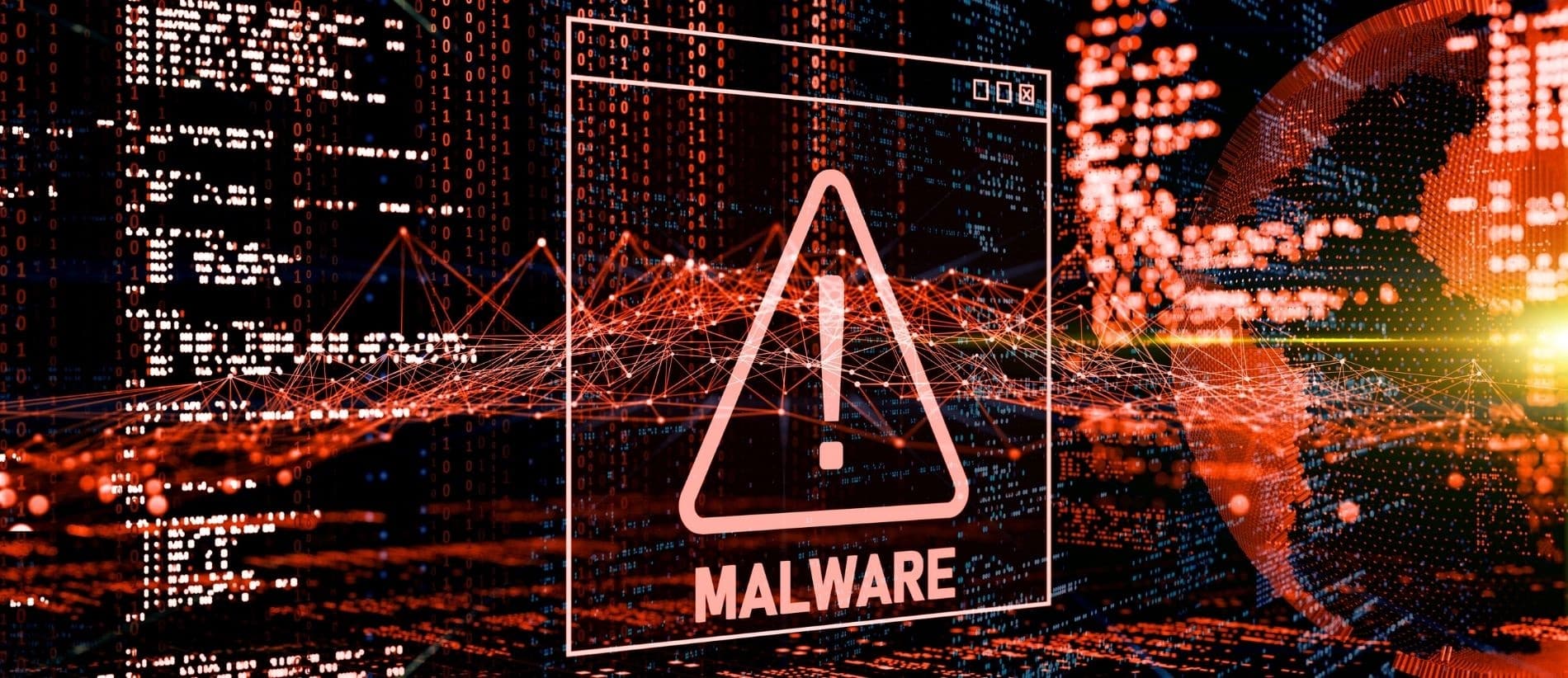 Examining the methodologies employed by cyber attackers, including social engineering, malware, and exploiting
vulnerabilities. Understanding the adversary's playbook is crucial for developing effective defense strategies.
Examining the methodologies employed by cyber attackers, including social engineering, malware, and exploiting
vulnerabilities. Understanding the adversary's playbook is crucial for developing effective defense strategies.
Social Engineering: This is a non-technical strategy used by cyber attackers which involves psychological
manipulation to trick users into making security mistakes or giving away sensitive information. It's often referred to
as 'human hacking'. The attacker might pose as a trusted entity and manipulate the victim into opening an email,
clicking on a link, or even divulging passwords. Phishing is a common type of social engineering where an attacker
attempts to steal sensitive data like login credentials or credit card numbers by pretending to be a reputable entity in
an email.
Malware: Malware, short for malicious software, is any software used by cyber attackers to gain unauthorized
access to a system, often with the intent of stealing sensitive data or causing damage. This could include viruses,
ransomware, spyware, and Trojan horses. Attackers often use social engineering techniques to trick users into
downloading and installing malware.
Exploiting Vulnerabilities: Attackers often exploit vulnerabilities in software or hardware to gain unauthorized
access to systems. These vulnerabilities could be design flaws or unintentional errors in software or hardware.
Attackers often use automated tools to discover systems that have these vulnerabilities. Once a vulnerability is
discovered, an attacker can use it to infiltrate the system, often injecting malicious code, escalating privileges, or
even denying services.
These methodologies highlight the importance of maintaining good cybersecurity practices, such as regularly updating and
patching systems, educating users about potential threats, and using secure and verified software.
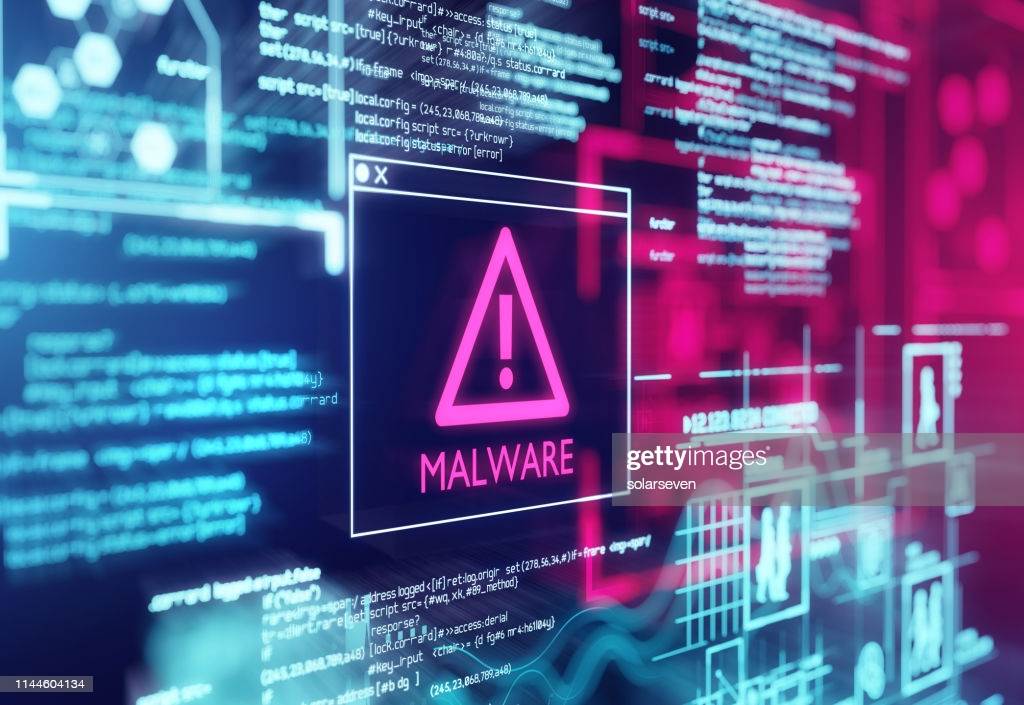
(1) What is Spear Phishing? Definition and Prevention (Fortinet)
(2)What is spear phishing? Definition and risks (Kaspersky)
(3) . What is Spear Phishing? (U.S. News)
(4) What is spear phishing? (IBM)
Spear phishing is a cyberattack method that cyberattackers use to steal sensitive information or install malware on the devices of specific victims. These attacks are highly targeted, hugely effective, and difficult to prevent. Here's how it works:
Research: Hackers conduct significant research, often through social media accounts, to discover personal
information about the victim. Disguise: Attackers disguise themselves as someone their victim trusts, usually a friend or colleague. Acquire Information: They attempt to acquire sensitive information via email or instant messaging tools.
Spear phishing is different from regular phishing, which is a broad term for attacks sent to multiple people in a bid to ensnare as many victims as possible. Spear phishing messages are addressed directly to the victim to convince them that they are familiar with the sender. The attacks require a lot of thought and planning to achieve the hacker’s goal.
The threat of a spear-phishing attack is highlighted by 88% of organizations around the world experiencing one in 2019, according to Proofpoint’s State of the Phish report. Of those organizations, 55% suffered a successful spear-phishing attack, while 65% of U.S. organizations were victims to spear phishing.
Notable Hacks:
(1) 2017 Equifax data breach (Wikipedia.).
(2) Chinese Hackers Charged in Equifax Breach (FBI) .
(3) Equifax Data Breach Settlement
(4) WannaCry ransomware attack (Wikipedia)
(5) Cybersecurity Attacks & Cybersecurity Breaches (Kaspersky)
(6) How to Prevent Data Breaches in 2023 (Highly Effective Strategy)
(7) How To Prevent A Data Breach In Your Company (Forbes)
(8) What was the WannaCry ransomware attack? (Cloudflare)
(9) What is a WannaCry Ransomware Attack? (Fortinet)
(10) What is the WannaCry Ransomware Attack? (UpGuard)
(11) How to Prevent Cyberattacks: Top Ways to Protect Yourself
(12) Avoid security breaches: How to protect your data
(13) Equifax Data Breach Settlement (Federal Trade Commission)
Analysis of significant cyber attacks. Understanding the root causes and consequences of these incidents provides valuable insights for preventing future
breaches.
 Equifax Data Breach: This breach occurred between May and July 2017 at the American credit bureau Equifax.
Private records of approximately 147.9 million Americans, 15.2 million British citizens, and about 19,000 Canadian
citizens were compromised. The breach was carried out by four Chinese military-backed hackers. The breach led to the
largest known theft of personally identifiable information ever carried out by state-sponsored actors. The breach had
significant consequences, including lawsuits and a settlement that resolved lawsuits brought by consumers after the data
breach.
Equifax Data Breach: This breach occurred between May and July 2017 at the American credit bureau Equifax.
Private records of approximately 147.9 million Americans, 15.2 million British citizens, and about 19,000 Canadian
citizens were compromised. The breach was carried out by four Chinese military-backed hackers. The breach led to the
largest known theft of personally identifiable information ever carried out by state-sponsored actors. The breach had
significant consequences, including lawsuits and a settlement that resolved lawsuits brought by consumers after the data
breach.
WannaCry Ransomware Attack: This was a worldwide cyberattack in May 2017 by the WannaCry ransomware cryptoworm,
which targeted computers running the Microsoft Windows operating system by encrypting data and demanding ransom payments
in the Bitcoin cryptocurrency. It propagated using EternalBlue, an exploit developed by the United States National
Security Agency (NSA) for Windows systems. EternalBlue was stolen and leaked by a group called The Shadow Brokers a
month prior to the attack. The attack was estimated to have affected more than 300,000 computers across 150 countries,
with total damages ranging from hundreds of millions to billions of dollars.
Notable Cyber Attacks

-
Norton Healthcare Data Breach (December 2023)
Norton Healthcare, based in Kentucky, suffered a data breach impacting an estimated 2.5 million people. Threat actors gained unauthorized access to personal information about millions of patients, as well as a considerable number of employees.
-
Vanderbilt University Medical Center Data Breach (November 2023)
A Tennessee-based medical institution fell victim to a ransomware attack orchestrated by the Meow ransomware gang. The Medical Center, which has over 40,000 employees, was one of several organizations added to the group leak database in November 2023.
-
Toronto Public Library Data Breach (November 2023)

The Toronto Public Library reported that sensitive, personal information relating to their employees, as well as library customers and volunteers, was stolen from their systems during a highly sophisticated ransomware attack.
-
Crypto.com (January 2022)
Crypto.com was subjected to a serious breach at the start of 2022. The attack targeted nearly 500 people’s cryptocurrency wallets. They stole $18 million of Bitcoin and $15 million of Ethereum.
-
Microsoft (March 2022)
Microsoft was targeted by a hacking collective called Lapsus$. The group posted a screenshot on Telegram to indicate that they’d managed to hack Microsoft and, in the process, they’d compromised Cortana, Bing, and several other products.
 Failure to act is an ivitation to hack. It doesn't matter if you are a big corporation, mom and pop shop, or individual. Unsecured assets will be compromised whether in cyberspace or the real world. Security is doing what you would normaly do, but in the most secure way possible. It's not eliminating the possibility of an incident, it's making sure that if an incident does happen it won't destroy your company, life, relationship or whatever it is of value that you have placed online.
Failure to act is an ivitation to hack. It doesn't matter if you are a big corporation, mom and pop shop, or individual. Unsecured assets will be compromised whether in cyberspace or the real world. Security is doing what you would normaly do, but in the most secure way possible. It's not eliminating the possibility of an incident, it's making sure that if an incident does happen it won't destroy your company, life, relationship or whatever it is of value that you have placed online.
Action Outcome
Educate Staff: Make sure that staff are aware of the importance of cybersecurity. Encrypt and Backup Data: Protect sensitive data by encrypting it and regularly backing it up. Conduct Regular Audits: Regularly audit your systems to identify and address vulnerabilities. Restrict Admin Rights: Limit the number of users with administrative privileges to reduce potential points of attack. Install a Firewall: Firewalls can help protect your network by filtering out malicious traffic. Keep Software Up-to-Date: Regularly update and patch all software to fix security vulnerabilities. Ensure a Best Practice Password Policy: Implement a strong password policy and consider using multi-factor authentication.
Remember, cybersecurity is a continuous process that requires regular review and updating to address emerging threats.
Continued on next page
Safeguarding the Digital Frontier: My Approach to Cybersecurity
And so, the tale of the Internet Old West continues. A realm where hackers plot in the shadows, incident responders patrol the digital frontier, and internet users, rely on the bravery of those who defended the virtual towns from the relentless forces of the outlaw hackers. These are their stories.
As The Encryption Kid, guided the captured member of Black Byte's Malwarez crew to the nearby Quarantine jail, a shadow fell over the bustling town of Cysecburg. Unbeknownst to him, Black Byte had been watching and waiting for the opportune moment to strike.
The Encryption Kid, known for his skills in safeguarding data and securing the virtual frontiers, was focused on delivering the outlaw to justice. This diversion left Sheriff Firewalle as the lone guardian of Cysecburg, a responsibility he took seriously. Little did he know that the town's databank, brimming with an unprecedented surge of personal data, had become a target.
In the dimly lit corners of Cysecburg, Black Byte a cunning and notorious outlaw, seized the moment. Alongside his partner in crime, Maluitius Ecksploit, they exploited a newly discovered vulnerability in the databank's code. Like digital phantoms, Black Byte and Maluitius Ecksploit infiltrated the databank's code with calculated precision. Exploiting the newfound vulnerability, they maneuvered through the virtual defenses with ease.
The town's defenses were momentarily weakened and the databank and struggling to handle the influx of information. This combination of circumstances proved to be an irresistible lure for the nefarious duo. Black Byte, and Maluitius Ecksploit infiltrated the databank, their digital footsteps silent and deadly. The outlaws moved swiftly, taking advantage of the chaos caused by the diversion orchestrated by The Encryption Kid and the captured crew member. As the duo delved deeper into the databank's code, they manipulated vulnerabilities to gain unauthorized access. The databank, now overstuffed with personal data, was indeed a treasure trove for the outlaws. It was a digital heist of unprecedented scale, and the very heart of Cysecburg's cybersecurity was under siege.
As the outlaws delved deeper into the databank, Sheriff Firewalle received an urgent alert. He was out patrolling the perimeter when the town's cybersecurity system, sensing the breach, sounded the alarm. Realizing the severity of the situation, the sheriff hurriedly rode back to Cysecburg, his virtual spurs echoing through the empty digital streets. The town, now eerily quiet, awaited the confrontation between law and lawlessness. As he reached the databank's virtual gates, the sheriff encountered Black Byte and Maluitius Ecksploit in the midst of their cyber heist. A virtual duel ensued, with lines of code clashing like the echoes of gunfire in the Internet Old West. The sheriff, armed with his knowledge of cybersecurity, fought valiantly against the outlaws who sought to plunder the town's digital treasures. Sheriff Firewalle, though outnumbered, stood firm. He knew that the town's future depended on his ability to thwart the outlaws and protect the invaluable personal data stored within the databank.
Back at the jail in Quarantine, The Encryption Kid was wrapping up his duties. The Encryption Kid, perceptive as ever, sensed a disturbance in the digital currents. As he approached the town, The Encryption Kid saw the telltale signs of a cyber intrusion. The databank, once a beacon of security, now flickered with the echoes of the outlaws' exploits. Realizing the severity of the situation, The Encryption Kid searched for Sheriff Firewalle. The Sherriff was already engaged in battle with the senior members of the Malwarez gang. When Black Byte saw The Encryption Kid join the Sherriff in the fight he shot up a flare. The flare was noticed by nearby members of the Malwarez gang, who hastily rode back to Cysecburg.
Together, Sheriff Firewalle and The Encryption Kid confronted Black Byte and Maluitius Ecksploit, engaging in a virtual showdown that would determine the fate of Cysecburg's precious data. The town's future hung in the balance as lawmen and outlaws clashed in the vast and ever-shifting landscape of the Internet Old West.
Continued on the next page
In an era dominated by digital connectivity, cybersecurity has become a paramount
concern for individuals and organizations alike. When I was growing up I was never to talk to strangers and never accept rides from them either. I always had money for the payphone in case of emergencies. I remembered all the phone numbers I needed without a contact list. Today, I have friends I've never seen in person. If I were to pass them on the street, they would not be a familiar face. If I need a ride I whip out my cell phone and have a stranger come pick me up and drive me around. I can't even remember the location of the last payphone I've seen. The world has changed dramtically from the one I grew up in. The advancements and benefits we've gain from the rise of technology is truly amazing but everything has two sides. Everyone talks about the good things technology has brought us but we gloss over the fact that people use these advancements for causes that are not so noble. The internet is teh new Old West. Back then if you could take something and get away with it, it was yours. Consequences of the law was almost nonexistent. Much like the Old West was, the internet as it is today; is still pretty wild and lawless (although that is changing quickly). Instead of extorting townspeople and robbing stage coaches, the bandits of today take a cyber approach to their heists. Today they remotely hack bank accounts and hold data for ransom.
In the Old West, everyone had a six shooter. Today everyone has cybersecurity practices.
This writing explores the critical importance of cybersecurity, outlining the steps that both individuals and companies should take to enhance their security posture. Additionally, we dip our toes into the sophisticated tactics employed by attackers, examining notable hacks and proposing robust security protocols that could have mitigated or prevented these incidents.
The increasing reliance on digital platforms has exposed individuals and businesses to unprecedented cybersecurity threats. This writing underscores the urgency of addressing these challenges and outlines the significance of a proactive cybersecurity strategy. The digitization of our world has undergone a transformative journey over the past two decades, shaping an interconnected environment that is both dynamic and pervasive. Unlike the landscape of 20 years ago, today's digital
technologies have woven themselves into the fabric of our daily lives, revolutionizing how we communicate, conduct business, and access information.
Twenty years ago when the internet was in its nascent stages, with limited connectivity and a fraction of the services we
now take for granted; cyber security was an after thought. We didn't use it that much, we didn't trust it that much. Today, however, digital technologies permeate nearly every aspect of our existence. From smartphones that are extensions of our identity to smart homes that respond to our commands, the pervasive nature of these technologies is unprecedented.
The evolution of the internet from a static web of information to a dynamic ecosystem of interconnected devices has
exponentially increased the scope of potential cyber threats. The internet works by accessing data. To make everything work better data access had to be easier. Computer systems love easy data access, and so do cyberattackers. In the past, isolated computer systems posed fewer entry
points for malicious actors. Now, with the proliferation of IoT devices and cloud-based services, the attack surface has
expanded exponentially, providing adversaries with a broader range of targets. 
The Rise of E-Commerce and Online Transactions:
Twenty years ago, online transactions were relatively uncommon, and financial activities predominantly occurred in
brick-and-mortar establishments. Today, the digital economy thrives, with e-commerce, online banking, and cryptocurrency
transactions becoming integral parts of our financial landscape. This shift has not only streamlined convenience but has
also attracted cybercriminals seeking to exploit vulnerabilities in these digital transactions.
Social Media and Personal Information:
The advent of social media platforms has revolutionized how we connect, share, and communicate. However, it has also
introduced new avenues for cyber threats. Personal information once guarded in private conversations is now shared
across digital platforms, creating a treasure trove for identity thieves and threat actors seeking to manipulate
individuals through targeted attacks.Social media platforms have become integral to modern communication, connecting billions of users globally. However, the
widespread use of social media has introduced new avenues for cyber threats. Here are some of the key challenges and
threats associated with social media platforms:
| The What | Description | The Method |
|---|---|---|
| Phishing Attacks: | Cybercriminals use social media to create fake profiles or impersonate legitimate accounts to trick users into revealing sensitive information. | Phishers may send deceptive messages, friend requests, or links that appear trustworthy but lead to malicious websites designed to capture login credentials or install malware. |
| Social Engineering Exploitation: | Social engineers leverage information available on social media profiles to manipulate individuals into divulging confidential information or performing actions that compromise security. | Attackers gather personal details, relationships, and interests from social media to craft convincing messages or impersonate trusted contacts. |
| Account Hijacking: | Cybercriminals attempt to take control of user accounts to spread malware, steal personal information, or engage in fraudulent activities. | Weak passwords, password reuse, and successful phishing attacks can grant unauthorized access to social media accounts. |
| Malicious Content Distribution: | Malicious actors use social media platforms to distribute malware, phishing links, or fake applications, exploiting users' trust in content shared within their network. | Cybercriminals may use compromised accounts to post malicious links, distribute infected files, or share content designed to deceive users. |
| Identity Theft: | Social media provides a wealth of personal information that can be exploited for identity theft, enabling attackers to impersonate individuals for various malicious purposes. | Stolen personal details from social media profiles can be used to create fake identities, commit fraud, or conduct targeted attacks. |
| Location-Based Threats: | Location tagging and check-ins on social media can expose users to physical security risks, especially if the information is visible to a wide audience. | Cybercriminals may use location data to track users, plan physical attacks, or exploit information about users' absence from home. |
| Credential Stuffing: | Attackers use usernames and passwords leaked from one breach to attempt unauthorized access to social media accounts, exploiting the common practice of password reuse. | Cybercriminals automate the login process using stolen credentials on various platforms, gaining access to accounts where users have reused passwords. |
| Deepfake Threats: | Deepfake technology can be leveraged to create realistic but fabricated content, including videos and audio recordings, which can be used to spread misinformation or manipulate public opinion. | Deepfake content can be shared on social media to deceive users, damage reputations, or amplify false narratives. |
| Business Email Compromise (BEC): | Cybercriminals may use information gathered from social media to conduct BEC attacks, where they impersonate executives or employees to trick others into transferring funds or revealing sensitive information. | BEC attackers craft convincing messages based on publicly available information to deceive targets within an organization. |

Mitigating these threats requires a combination of user awareness, secure privacy settings, strong authentication practices, and platform-specific security features. Users should exercise caution when sharing personal information and be mindful of potential risks associated with their online presence. Social media platforms, in turn, must continually enhance security measures to protect users from evolving cyber threats.
Cloud Computing and Remote Connectivity:
The shift towards cloud computing and remote work, accelerated in recent years, has further blurred the traditional
boundaries of secure environments. Unlike two decades ago, when data was largely stored on localized servers, today's
reliance on cloud services has made data accessible from virtually anywhere. This accessibility enhances productivity
but also poses challenges in safeguarding sensitive information from cyber threats.
Cloud computing and remote work have significantly changed the traditional approach to cybersecurity in several ways:

| The What | The Why |
|---|---|
| Increased Cyberattacks: | With the shift to remote work, there has been a reported 90% increase in cyberattacks. This has led to an increased focus on remote cybersecurity. |
| Reliance on VPNs: | Virtual Private Networks (VPNs) have been widely used to ensure secure connections for remote workers. However, VPNs can have issues, such as outdated patching and updates, which can create vulnerabilities¹. |
| Cloud Computing Security Issues: | While cloud computing has made remote work easier, it also presents new security challenges. For instance, data stored in the cloud may not be fully controlled by the user, leading to potential security breaches. |
| Shared Responsibility Model: | In the cloud-first world, security is a shared responsibility between customers and cloud providers. This is a shift from traditional on-premise security where customers had full control of their environments and security. |
| Increased Complexity: | The use of cloud environments often involves a more complex architecture, such as microservices. This increased fragmentation can lead to access control issues and increases the probability of errors. |
These changes highlight the need for evolving cybersecurity strategies to address the unique challenges posed by cloud computing and remote work.
The Cybersecurity Landscape:
A comprehensive overview of the current cybersecurity landscape, highlighting the evolving nature of threats and the
need for continuous adaptation to emerging risks.
Highlighting the evolving nature of threats and the need for continuous adaptation to emerging risks in a cybersecurity
awareness campaign can be achieved through the following strategies:
1. Educate on Evolving Threats: Regularly update your team about the latest cybersecurity trends, such as the
increasing sophistication of cyberattacks and the use of artificial intelligence and machine learning by adversaries.
 2. Promote Proactive Measures: Encourage a proactive, forward-looking stance to address and mitigate future
disruptions¹. This includes anticipating emerging cyber threats and understanding new defensive capabilities.
2. Promote Proactive Measures: Encourage a proactive, forward-looking stance to address and mitigate future
disruptions¹. This includes anticipating emerging cyber threats and understanding new defensive capabilities.
3. Share Knowledge and Experiences: Foster a culture of knowledge sharing to identify emerging trends, understand
new attack vectors, and collectively develop effective defense strategies.
4. Develop a Cybersecurity Plan: Create a plan detailing how information about ongoing threats is analyzed and used
internally. Regularly evaluate new tools and processes to address security gaps in response to threat trends and
observed tactics.
5. Prepare for Attacks: Develop a playbook to cater to different potential threats⁵. This includes gaining
visibility into their environment, educating users, managing vulnerabilities, and planning and practicing your plan with
your team.
6. Maintain Situational Awareness: Have governance processes in place and maintain a high degree of situational
awareness in every part of the world where you're active.
Remember, cybersecurity is not a marathon, it's a never-ending race; but with the right strategies and continuous adaptation, we can stay
ahead of the threats.
Steps Individuals Can Take to Improve Security:
This section provides practical guidance for individuals, emphasizing the importance of personal cybersecurity hygiene.
Topics include password management, two-factor authentication, and awareness of phishing attacks.
In the digital age, individuals play a crucial role in maintaining a secure online environment. Personal cybersecurity
hygiene is the foundation for protecting sensitive information and thwarting potential threats. The following practical
guidance is essential for individuals to bolster their cybersecurity defenses:

Password Management:
Use Strong and Unique Passwords: Create complex passwords that combine uppercase and lowercase letters, numbers,
and special characters. Avoid easily guessable information, such as birthdays or names.
Password Diversity: Avoid using the same password across multiple accounts. If one account is compromised, having
unique passwords ensures that other accounts remain secure.
Password Managers: Consider using a reputable password manager to generate, store, and autofill complex passwords.
Password managers enhance security by reducing the reliance on memory and promoting the use of unique credentials for
each account.
Two-Factor Authentication (2FA):
Enable 2FA Whenever Possible: Whenever a service offers two-factor authentication, enable it. This adds an
additional layer of security by requiring a second form of verification, usually through a mobile device or email.
Biometric Authentication:
Utilize biometric authentication methods, such as fingerprint or facial recognition,
where available, to add an extra layer of personalization and security.
Awareness of Phishing Attacks:
Be Skeptical of Unsolicited Communications: Exercise caution when receiving unexpected emails, messages, or calls,
especially those urging urgent action. Verify the legitimacy of the communication before clicking on links or providing
personal information.
Check Email Addresses and URLs: Scrutinize email addresses and URLs for inconsistencies or misspellings.
Legitimate organizations will use official channels and accurate web addresses.
Educate Yourself: Stay informed about common phishing techniques and tactics. Be wary of emails requesting
sensitive information or posing as official communications from banks, government agencies, or reputable companies.
(1) What Is Social Engineering in Cyber Security? - Cisco.
(2) What is Social Engineering? | IBM.
(3) Malware, Phishing, and Ransomware | Cybersecurity and ... - CISA.
(4) What Is a Malware Attack? Definition & Best Practices | Rapid7.
(5) Malware attacks: What you need to know | Norton.
(6) Top Routinely Exploited Vulnerabilities | CISA.
(7) 2022 Top Routinely Exploited Vulnerabilities | CISA.
(8) Exploit in Computer Security | Fortinet.
(9) What Is Social Engineering? Examples + Prevention - CrowdStrike..
(10) Avoiding Social Engineering and Phishing Attacks | CISA.
(11) The Human Factor In Cybersecurity: Understanding Social Engineering.
(12) Malware | Cyber.gov.au.
(13) What is Malware? How to Prevent Malware Attacks? - Fortinet.
(14) Inside the Mind of a Cyber Attacker - SentinelOne.
(15) 11 Common Cyber-attack Methods - Logically Secure Ltd.
(16) Security and Risk Assessment of IT Defense Strategies ... - ISACA.
(17) Deconstructing Cybercrime: Top 10 Attack Methods Attackers Use - Forbes.
(18) The 6 most popular cyberattack methods hackers use to attack
(19) Hacking the Human Mind: Exploiting Vulnerabilities in the 'First Line of Cyber Defense'.
(20) Privilege elevation exploits used in over 50% of insider attacks.
(21) Russian intelligence caught exploiting major software vulnerability, worldwide users at risk.
5. Attack Vectors and Tactics:
 Examining the methodologies employed by cyber attackers, including social engineering, malware, and exploiting
vulnerabilities. Understanding the adversary's playbook is crucial for developing effective defense strategies.
Examining the methodologies employed by cyber attackers, including social engineering, malware, and exploiting
vulnerabilities. Understanding the adversary's playbook is crucial for developing effective defense strategies.
Social Engineering: This is a non-technical strategy used by cyber attackers which involves psychological
manipulation to trick users into making security mistakes or giving away sensitive information. It's often referred to
as 'human hacking'. The attacker might pose as a trusted entity and manipulate the victim into opening an email,
clicking on a link, or even divulging passwords. Phishing is a common type of social engineering where an attacker
attempts to steal sensitive data like login credentials or credit card numbers by pretending to be a reputable entity in
an email.
Malware: Malware, short for malicious software, is any software used by cyber attackers to gain unauthorized
access to a system, often with the intent of stealing sensitive data or causing damage. This could include viruses,
ransomware, spyware, and Trojan horses. Attackers often use social engineering techniques to trick users into
downloading and installing malware.
Exploiting Vulnerabilities: Attackers often exploit vulnerabilities in software or hardware to gain unauthorized
access to systems. These vulnerabilities could be design flaws or unintentional errors in software or hardware.
Attackers often use automated tools to discover systems that have these vulnerabilities. Once a vulnerability is
discovered, an attacker can use it to infiltrate the system, often injecting malicious code, escalating privileges, or
even denying services.
These methodologies highlight the importance of maintaining good cybersecurity practices, such as regularly updating and
patching systems, educating users about potential threats, and using secure and verified software.

(1) What is Spear Phishing? Definition and Prevention (Fortinet)
(2)What is spear phishing? Definition and risks (Kaspersky)
(3) . What is Spear Phishing? (U.S. News)
(4) What is spear phishing? (IBM)
Spear phishing is a cyberattack method that cyberattackers use to steal sensitive information or install malware on the devices of specific victims. These attacks are highly targeted, hugely effective, and difficult to prevent. Here's how it works:
Research: Hackers conduct significant research, often through social media accounts, to discover personal
information about the victim. Disguise: Attackers disguise themselves as someone their victim trusts, usually a friend or colleague. Acquire Information: They attempt to acquire sensitive information via email or instant messaging tools.
Spear phishing is different from regular phishing, which is a broad term for attacks sent to multiple people in a bid to ensnare as many victims as possible. Spear phishing messages are addressed directly to the victim to convince them that they are familiar with the sender. The attacks require a lot of thought and planning to achieve the hacker’s goal.
The threat of a spear-phishing attack is highlighted by 88% of organizations around the world experiencing one in 2019, according to Proofpoint’s State of the Phish report. Of those organizations, 55% suffered a successful spear-phishing attack, while 65% of U.S. organizations were victims to spear phishing.
(1) What is Spear Phishing? Definition and Prevention (Fortinet)
(2)What is spear phishing? Definition and risks (Kaspersky)
(3) . What is Spear Phishing? (U.S. News)
(4) What is spear phishing? (IBM)
Notable Hacks:
(1) 2017 Equifax data breach (Wikipedia.).
(2) Chinese Hackers Charged in Equifax Breach (FBI) .
(3) Equifax Data Breach Settlement
(4) WannaCry ransomware attack (Wikipedia)
(5) Cybersecurity Attacks & Cybersecurity Breaches (Kaspersky)
(6) How to Prevent Data Breaches in 2023 (Highly Effective Strategy)
(7) How To Prevent A Data Breach In Your Company (Forbes)
(8) What was the WannaCry ransomware attack? (Cloudflare)
(9) What is a WannaCry Ransomware Attack? (Fortinet)
(10) What is the WannaCry Ransomware Attack? (UpGuard)
(11) How to Prevent Cyberattacks: Top Ways to Protect Yourself
(12) Avoid security breaches: How to protect your data
(13) Equifax Data Breach Settlement (Federal Trade Commission)
Analysis of significant cyber attacks. Understanding the root causes and consequences of these incidents provides valuable insights for preventing future
breaches.
 Equifax Data Breach: This breach occurred between May and July 2017 at the American credit bureau Equifax.
Private records of approximately 147.9 million Americans, 15.2 million British citizens, and about 19,000 Canadian
citizens were compromised. The breach was carried out by four Chinese military-backed hackers. The breach led to the
largest known theft of personally identifiable information ever carried out by state-sponsored actors. The breach had
significant consequences, including lawsuits and a settlement that resolved lawsuits brought by consumers after the data
breach.
Equifax Data Breach: This breach occurred between May and July 2017 at the American credit bureau Equifax.
Private records of approximately 147.9 million Americans, 15.2 million British citizens, and about 19,000 Canadian
citizens were compromised. The breach was carried out by four Chinese military-backed hackers. The breach led to the
largest known theft of personally identifiable information ever carried out by state-sponsored actors. The breach had
significant consequences, including lawsuits and a settlement that resolved lawsuits brought by consumers after the data
breach.
WannaCry Ransomware Attack: This was a worldwide cyberattack in May 2017 by the WannaCry ransomware cryptoworm,
which targeted computers running the Microsoft Windows operating system by encrypting data and demanding ransom payments
in the Bitcoin cryptocurrency. It propagated using EternalBlue, an exploit developed by the United States National
Security Agency (NSA) for Windows systems. EternalBlue was stolen and leaked by a group called The Shadow Brokers a
month prior to the attack. The attack was estimated to have affected more than 300,000 computers across 150 countries,
with total damages ranging from hundreds of millions to billions of dollars.
Notable Cyber Attacks

-
Norton Healthcare Data Breach (December 2023)
Norton Healthcare, based in Kentucky, suffered a data breach impacting an estimated 2.5 million people. Threat actors gained unauthorized access to personal information about millions of patients, as well as a considerable number of employees.
-
Vanderbilt University Medical Center Data Breach (November 2023)
A Tennessee-based medical institution fell victim to a ransomware attack orchestrated by the Meow ransomware gang. The Medical Center, which has over 40,000 employees, was one of several organizations added to the group leak database in November 2023.
-
Toronto Public Library Data Breach (November 2023)

The Toronto Public Library reported that sensitive, personal information relating to their employees, as well as library customers and volunteers, was stolen from their systems during a highly sophisticated ransomware attack.
-
Crypto.com (January 2022)
Crypto.com was subjected to a serious breach at the start of 2022. The attack targeted nearly 500 people’s cryptocurrency wallets. They stole $18 million of Bitcoin and $15 million of Ethereum.
-
Microsoft (March 2022)
Microsoft was targeted by a hacking collective called Lapsus$. The group posted a screenshot on Telegram to indicate that they’d managed to hack Microsoft and, in the process, they’d compromised Cortana, Bing, and several other products.
 Failure to act is an ivitation to hack. It doesn't matter if you are a big corporation, mom and pop shop, or individual. Unsecured assets will be compromised whether in cyberspace or the real world. Security is doing what you would normaly do, but in the most secure way possible. It's not eliminating the possibility of an incident, it's making sure that if an incident does happen it won't destroy your company, life, relationship or whatever it is of value that you have placed online.
Failure to act is an ivitation to hack. It doesn't matter if you are a big corporation, mom and pop shop, or individual. Unsecured assets will be compromised whether in cyberspace or the real world. Security is doing what you would normaly do, but in the most secure way possible. It's not eliminating the possibility of an incident, it's making sure that if an incident does happen it won't destroy your company, life, relationship or whatever it is of value that you have placed online.
(1) 2017 Equifax data breach (Wikipedia.).
(2) Chinese Hackers Charged in Equifax Breach (FBI) .
(3) Equifax Data Breach Settlement
(4) WannaCry ransomware attack (Wikipedia)
(5) Cybersecurity Attacks & Cybersecurity Breaches (Kaspersky)
(6) How to Prevent Data Breaches in 2023 (Highly Effective Strategy)
(7) How To Prevent A Data Breach In Your Company (Forbes)
(8) What was the WannaCry ransomware attack? (Cloudflare)
(9) What is a WannaCry Ransomware Attack? (Fortinet)
(10) What is the WannaCry Ransomware Attack? (UpGuard)
(11) How to Prevent Cyberattacks: Top Ways to Protect Yourself
(12) Avoid security breaches: How to protect your data
(13) Equifax Data Breach Settlement (Federal Trade Commission)
Notable Cyber Attacks

-
Norton Healthcare Data Breach (December 2023)
Norton Healthcare, based in Kentucky, suffered a data breach impacting an estimated 2.5 million people. Threat actors gained unauthorized access to personal information about millions of patients, as well as a considerable number of employees.
-
Vanderbilt University Medical Center Data Breach (November 2023)
A Tennessee-based medical institution fell victim to a ransomware attack orchestrated by the Meow ransomware gang. The Medical Center, which has over 40,000 employees, was one of several organizations added to the group leak database in November 2023.
-
Toronto Public Library Data Breach (November 2023)

The Toronto Public Library reported that sensitive, personal information relating to their employees, as well as library customers and volunteers, was stolen from their systems during a highly sophisticated ransomware attack.
-
Crypto.com (January 2022)
Crypto.com was subjected to a serious breach at the start of 2022. The attack targeted nearly 500 people’s cryptocurrency wallets. They stole $18 million of Bitcoin and $15 million of Ethereum.
-
Microsoft (March 2022)
Microsoft was targeted by a hacking collective called Lapsus$. The group posted a screenshot on Telegram to indicate that they’d managed to hack Microsoft and, in the process, they’d compromised Cortana, Bing, and several other products.
| Action | Outcome |
|---|---|
| Educate Staff: | Make sure that staff are aware of the importance of cybersecurity. |
| Encrypt and Backup Data: | Protect sensitive data by encrypting it and regularly backing it up. |
| Conduct Regular Audits: | Regularly audit your systems to identify and address vulnerabilities. |
| Restrict Admin Rights: | Limit the number of users with administrative privileges to reduce potential points of attack. |
| Install a Firewall: | Firewalls can help protect your network by filtering out malicious traffic. |
| Keep Software Up-to-Date: | Regularly update and patch all software to fix security vulnerabilities. |
| Ensure a Best Practice Password Policy: | Implement a strong password policy and consider using multi-factor authentication. |